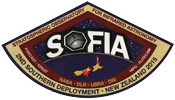Day Seven - Check Flight

While Carla was taking pictures, Mike was interviewing (or time lapsing, or editing). Here's Sarah doing a great job with her pre-flight interview.
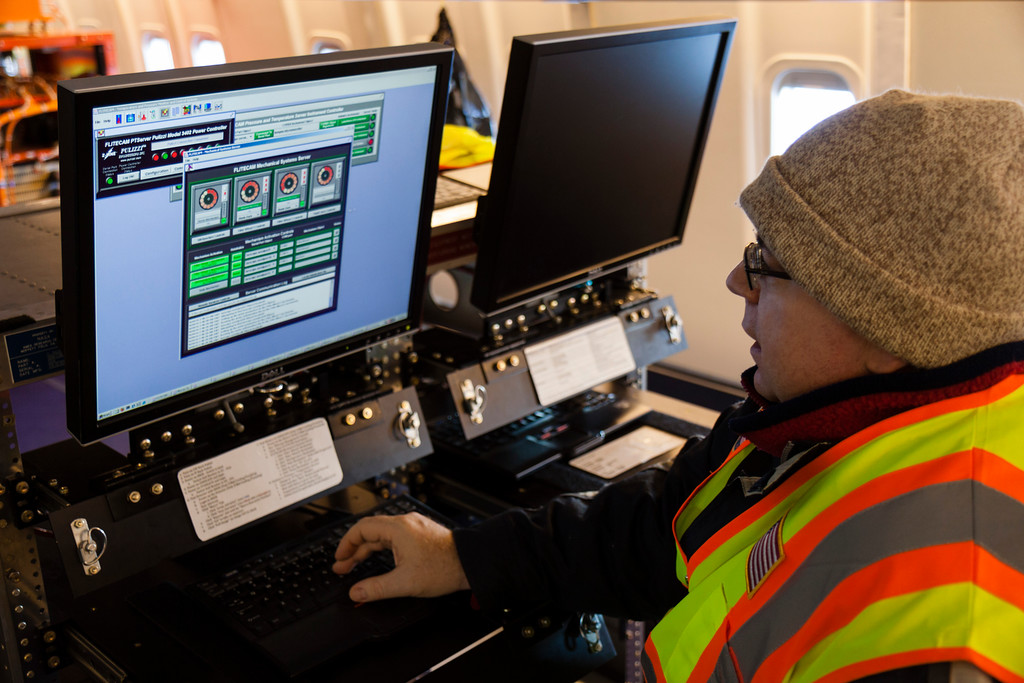
Joe Adams will be the FLITECAM instrument operator going forward. I helped him bring up all of the software, test the mechanisms and the detector.
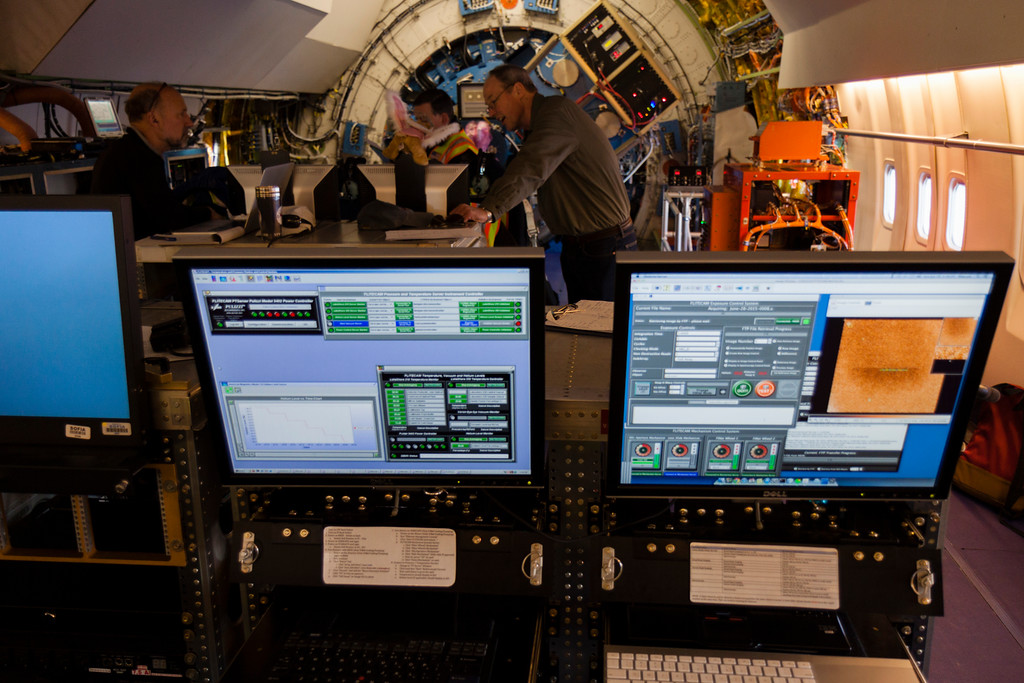
Everything worked perfectly -- the first time. The orange square on the right hand monitor is a normal test image for FLITECAM. Tom and Ted from HIPO are in the background.
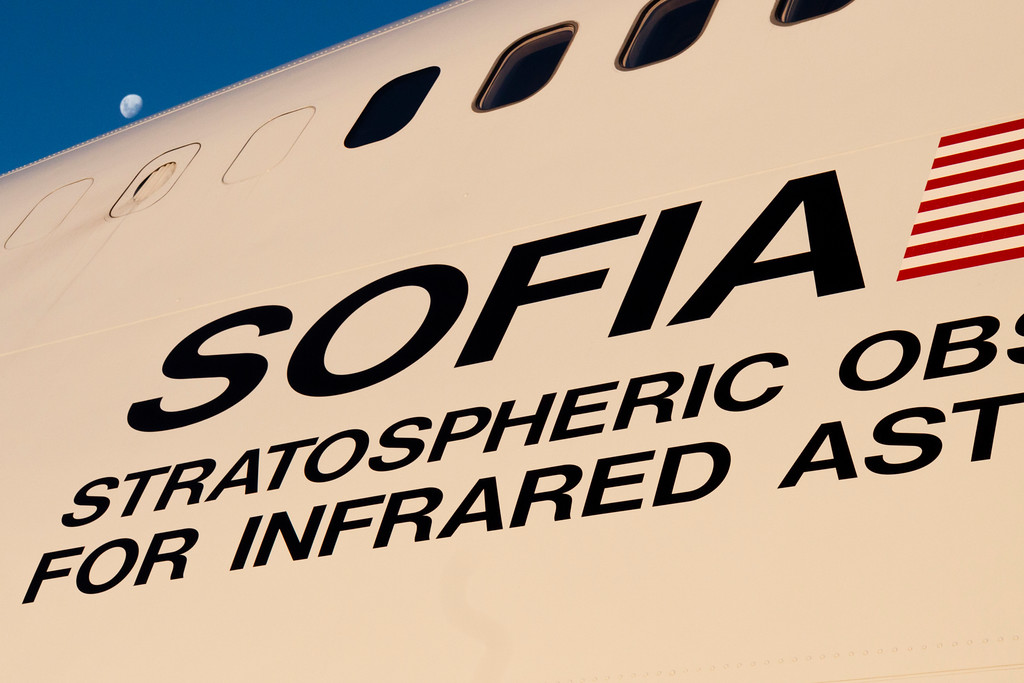
The moon is still waxing over SOFIA.
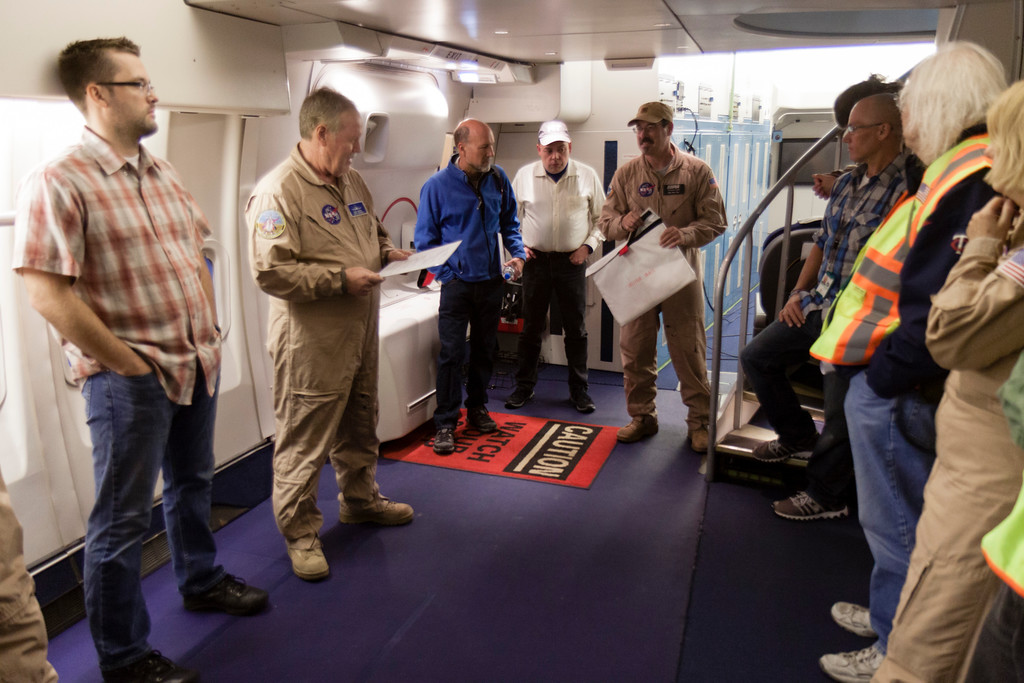
On every flight, after the door is closed, there is a safety briefing to remind everyone about the basics of SOFIA, since it's a heavily modified Boeing 747. This was the check flight, so there were no rookies on board.

Skynet is the name of the in-air internet connection. Yes, it's actually called Skynet. But it's critical for the occultation. The predicted position of the shadow can move up until midnight on the occultation flight; this allows enough time to alter course and intercept. Skynet's connection reliability varies with SOFIA's position, but communication is much clearer via e-mail than trying to speak on the satellite phone. Here, Jeff exchanges e-mail with Amanda at MIT for testing while Cathy looks on.
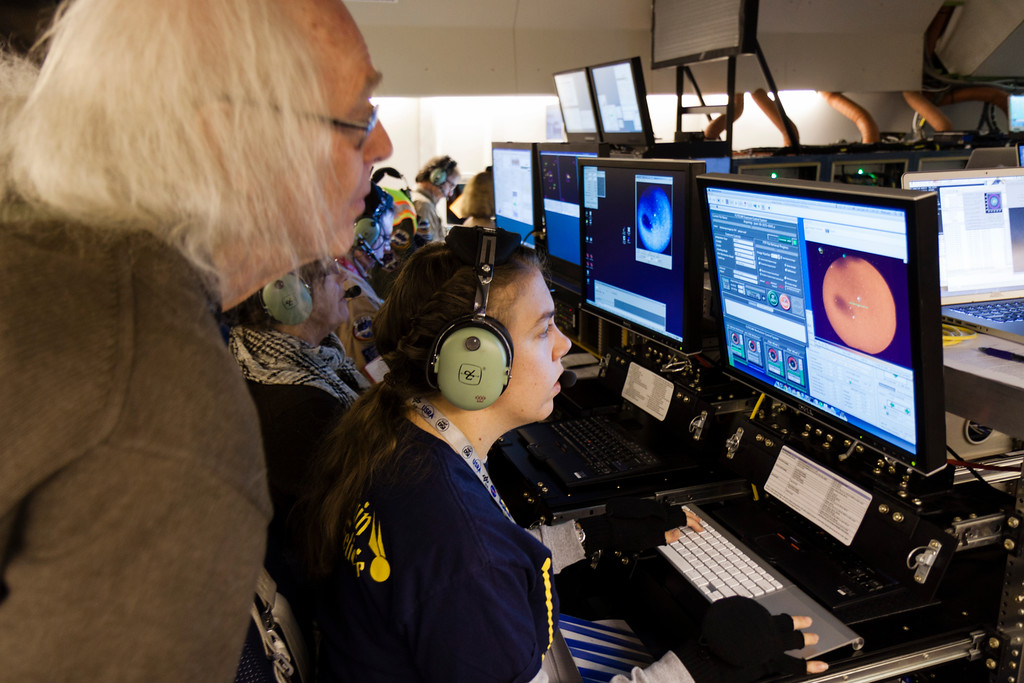
There are two systems behind the right side monitor. What's shown is the prettier, java interface side running on a Mac Mini. This software connects to the detector control system, MKIR, which we swapped earlier. For the occultation, only MKIR will be used because it's overhead is much lower. This leaves some critical housekeeping data out of the files, but it can be added back in post-flight.
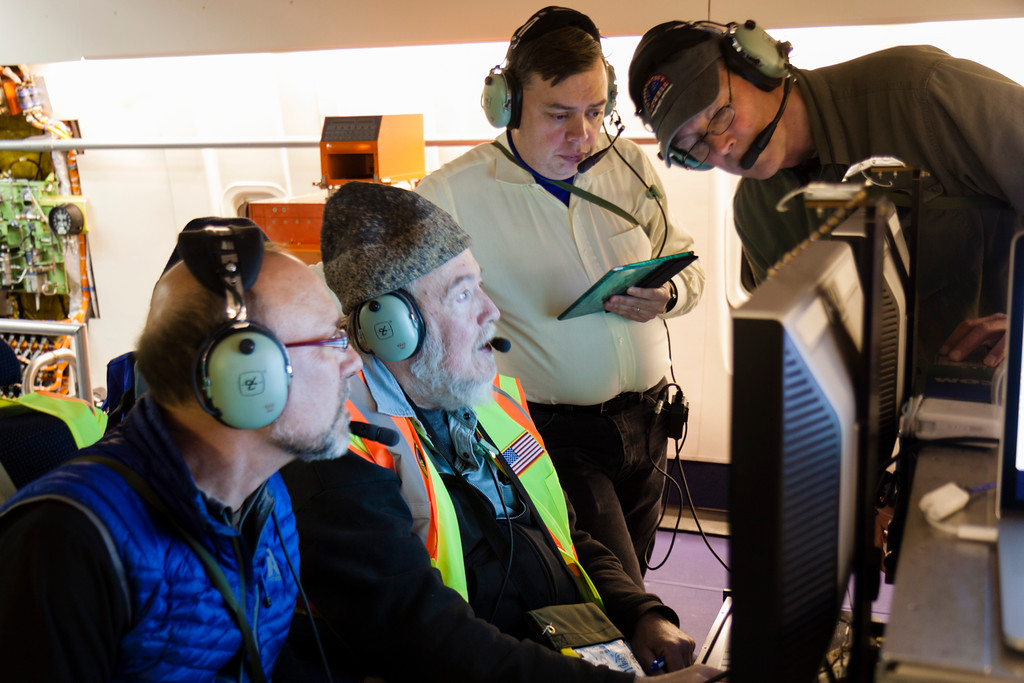
The HIPO team -- Tom, Peter, Mike, and Ted -- check out their frames.

FLIPO in flight, note the tilt of the telescope assembly.
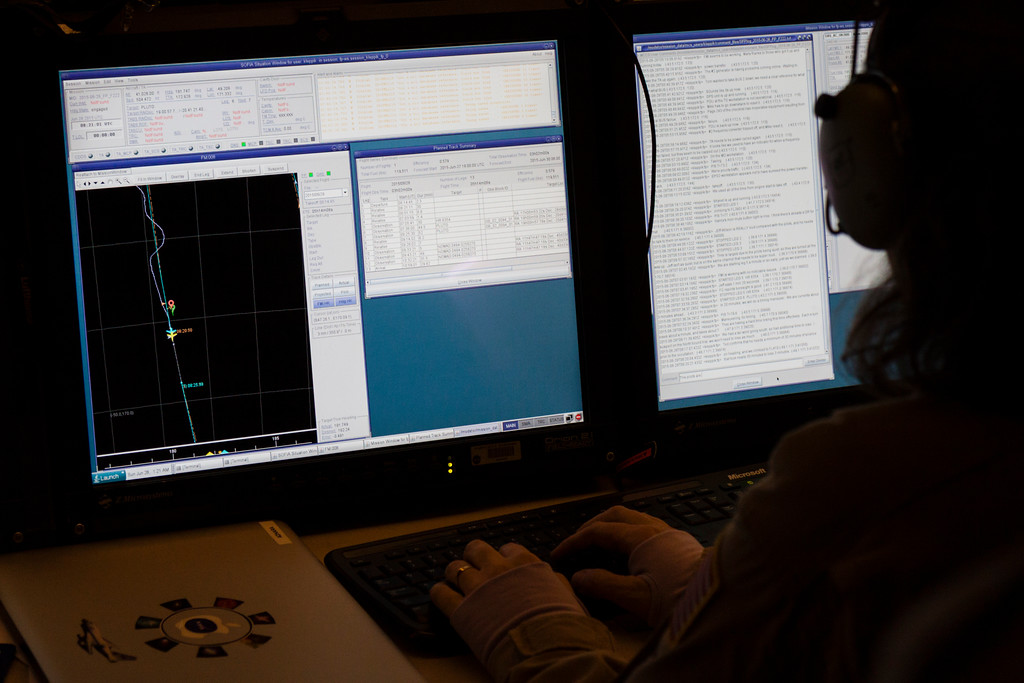
There were a couple of hiccups in flight. Trying to adjust speed (notice the S-curves in the flight path) took a lot longer than planned. In part because the water vapor was low, the decision was made to stay at 39000 feet for the occultation, which gives more speed control to the pilots.

The Mission Controls and Communications System (MCCS) are the primary computers for interfacing with the telescope. This system crashed during the check flight, causing a lengthy delay. As a precaution, preemptive action was taken to reboot the MCCS during a set up leg during the real Pluto occultation flight.

Overall, including lessons learned from failures, the check flight went very well! Here's Sarah at FLITECAM's controls with Ryan directing.
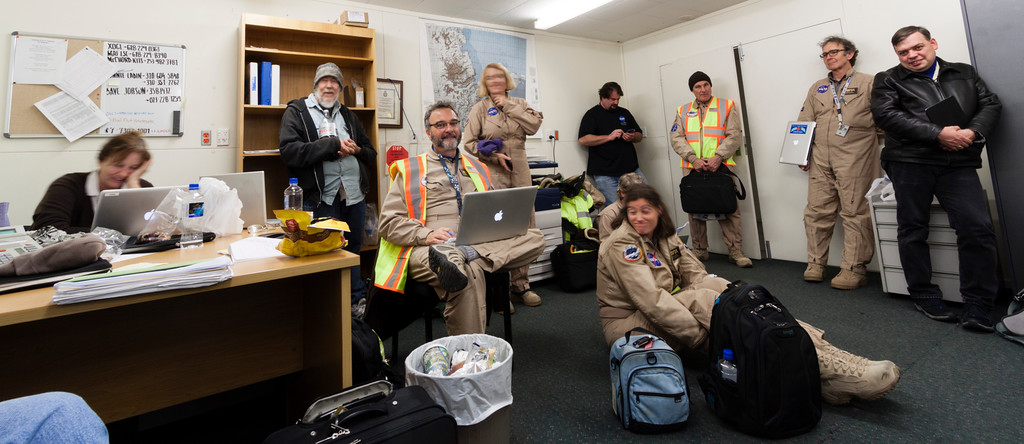
There is usually only a post-mission briefing when something goes horribly wrong. But because of the importance of the next flight, an impromptu meeting was held. Important, yes, but everyone was still very tired. Ted stressed that it was critical for everyone to be well rested for the occultation. So we broke fairly quickly to go back to our respective hotels.
